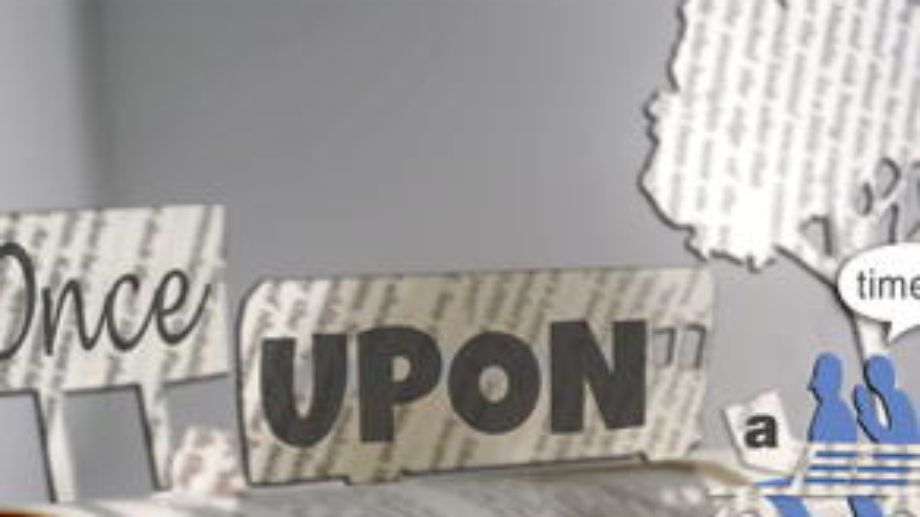
Today, Walt Disney Imagineering will shed a little light on their Living Worlds initiative. Announced last week during at Story World in Los Angeles, precious few details have emerged concerning the greater goals of the program beyond its intention to “to catalyze and support the transmedia community and continue to push the limits of immersive storytelling.”
As one might expect, the announcement that a player as big as Disney was creating a program specifically geared towards developing transmedia properties caused quite a stir: would Disney be looking to develop a few good ideas or would the program be a transmedia version of the company’s famous television writing fellowships, intended to develop promising talent? Would those selected to participate get to call themselves imagineers (be honest, wouldn’t you think about applying for that title alone)?
While only time will tell what will come from the program, the very fact that Disney is getting into this space should be welcome news to the community of US transmedia creators. Of all the big media companies, Disney has been a pioneering force in immersive story worlds since the first animatronic pirate bellowed its first sea shanty to park-goers on the opening day of Disneyland. Beyond the work the company has done in physical space with half a dozen theme parks, the House of Mouse has eagerly explored new storytelling techniques made possible in the digital age by building transmedia campaigns around tent-pole films and franchises like Tron Legacy and The Pirates of the Caribbean. But what makes Living Worlds different is that it is an open call for ideas, marking what may be the first attempt by a US-based media conglomerate to develop artists working in the immersive arena and giving outsiders the same chance as those who have been playing in the space since the first Cloudmaker began decoding The Beast.
Very often there is no comparing the US media establishment with those abroad. We spend more on producing film, television, and games then anywhere else in the world, which, of course, is not in itself an indicator of quality. But the one area where our Canadian and European cousins have begun to outpace us is in spending on transmedia development. Even discounting state-sponsored funds like those run by the National Film Board of Canada, major media producers and distributors abroad have made significant investments in immersive storytelling and experience design.

Orange's Detective Avenue
Take, for instance, the work done in the field by French telecommunications company Orange. With over 220 million customers across Europe, Africa, and Asia, the conglomerate is a leading provider of mobile phone systems, internet, and IP television services. With all of those eyes and ears, Orange's network makes for one content-hungry system. In 2009, parts of the company’s marketing and social media divisions were folded together to create Orange Transmedia Lab. The group includes a permanent staff of marketers, producers, and game designers charged with not just studying emerging trends in storytelling but acting as advocates for transmedia storytellers.
If it makes sense for a company with a vested interest in telecommunications to study and experiment with new ways of engaging customers, doesn’t it also makes sense for that same company to apply what they learn? That is exactly what Orange did in 2010 with the launch of Fanfan 2 and Detective Avenue, a pair of medium-scale transmedia properties developed by the Lab. Both projects were as much living labs as they were means of generating eyes on screens, giving Transmedia Lab and its parent organization the sort of data that only experience can provide. In addition to developing in-house projects, Orange’s Transmedia Lab advertises that it is “open to contributions from… external sources, giving you access to new expertise and to Orange’s international base” and engaging in vital partnerships with organizations such as the Annenberg Innovation Lab.
You don’t become a Disney or an Orange by not taking risks, and only time will tell if Living Worlds will provide the imangineers with any tangible rewards for their efforts. But it is promising that an American media company with the power and scale of Disney is reaching out to the transmedia community. While no one expects the company to hand the keys to their multi-billion dollar media empire to a crop of young transmedia talent (yet…), the relative cost of creating a support infrastructure and development pipeline for storytellers may signal a watershed moment in the community. One hopes that other organizations with similar platform assets will watch how Living Worlds develops, perhaps offering competing or complimentary programs for creatives at all skill levels. Imagine a not-too-far-off future where story hackers leverage theme parks, cruise ships, and vast cable television, network television, and film properties on behalf of Uncle Walt?
Hopefully we won’t have to imagine for too long…



